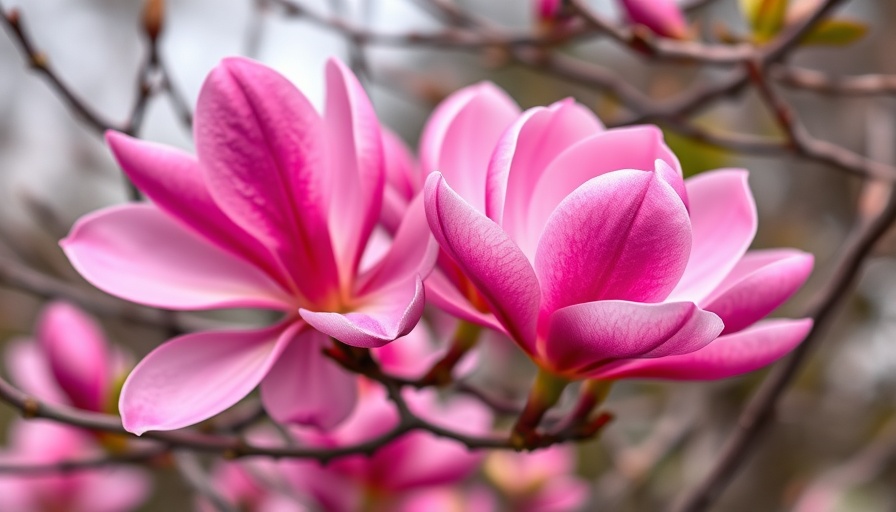
The Allure of Magnolia Trees: A Spring Tradition
As the winter frost wanes and spring unfurls in all its glory, magnolia trees stand as heralds of the season. Those fortunate enough to encounter their grandeur will recognize them as more than mere ornamental trees; they are vibrant symbols of renewal and beauty that capture the spirit of nature’s reawakening. If you’re new to the world of gardening and are curious about adding these majestic trees to your landscape, this guide offers essential insights to nurture your passion for magnolias.
Embracing the Beauty of the Magnolia
Among the many treasures nature offers, magnolia trees are cherished for their stunning and aromatic blossoms. Their large, fragrant flowers are typically seen in shades of pink, purple, and white, drawing garden lovers into their embrace. From the Southern Magnolia with its glossy leaves to the delicate Star Magnolia, there are numerous varieties to explore. Each embodies unique characteristics that cater to various gardening preferences.
Full Bloom: How to Grow Your Own Magnolia Tree
Growing a magnolia tree requires understanding its needs. Ideally, magnolias thrive in well-drained, acidic soil enriched with organic matter. A sunny location will allow them to blossom to their fullest potential. Remember that these trees generally prefer to be planted in spacious areas, as many species can grow quite large. For those with smaller gardens, consider the Saucer Magnolia which can fit more comfortably among your other prized plants.
Cherishing the Diverse Uses of Magnolia
Beyond their striking appearance, magnolia trees offer diverse benefits. Their evergreen leaves work wonders for crafting beautiful wreaths, while their petals are edible, bringing a unique flavor to your culinary creations. The seed pods, often repurposed for decorations, can add a rustic charm to your home decor. Harnessing all parts of the magnolia plant is an excellent way to appreciate its continued presence in your life.
A Historical Perspective on Magnolias
Did you know that magnolia trees have a rich history stretching back more than 100 million years? Fossil evidence shows that these magnificent plants existed long before many of today’s insects, relying on ancient wingless beetles for pollination. Such a long-standing place in the ecosystem and human culture speaks volumes about their resilience and adaptability. In China, magnolias have been celebrated since the 7th century, while in America, the Sweet Magnolia became a symbol of the Southern landscape.
Future Considerations: The Role of Magnolias in Urban Gardens
With urban gardening on the rise, magnolia trees hold significant potential for future landscapes. They not only beautify the environment but also offer sanctuary to various wildlife. By planting these trees, we can promote biodiversity and create green havens in our backyards and neighborhoods. As more urban areas become conscious of their environmental impact, incorporating native and adaptable plants like magnolias is a step toward sustainable gardening.
Frequently Asked Questions about Magnolia Trees
How much space does a magnolia tree need? While some magnolia varieties become quite large, smaller species require less room. For example, the Star Magnolia is more compact and better suited for tighter spaces.
Do magnolia trees require special care? Yes, magnolias thrive in well-drained, acidic soil, and benefit from regular watering, especially in their early growth stages. Protecting newly planted trees during harsh winters is also essential.
Call to Action: Embrace Your Green Thumb!
Engaging with nature has never been more rewarding. If you’re inspired to plant your own magnolia tree or explore its many uses, check your local gardening centers for saplings and supplies! Share your journey with your community, and let your garden flourishes play a part in revitalizing the environment.
 Add Row
Add Row  Add
Add 




Write A Comment